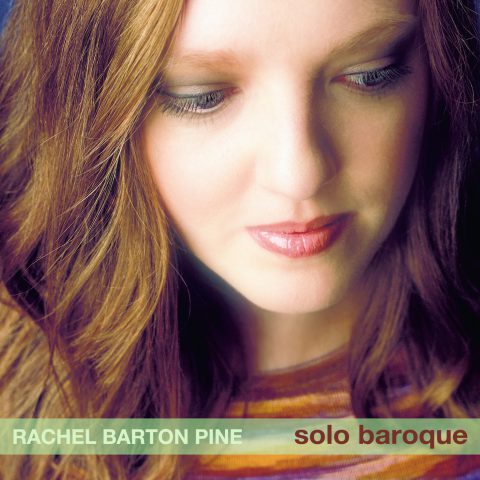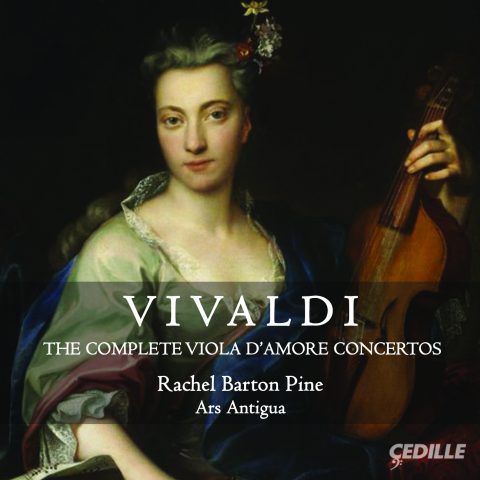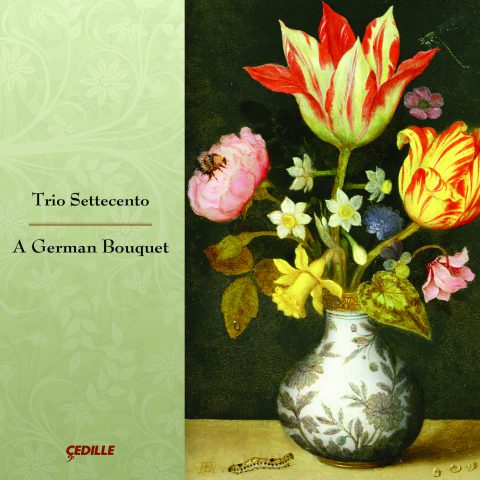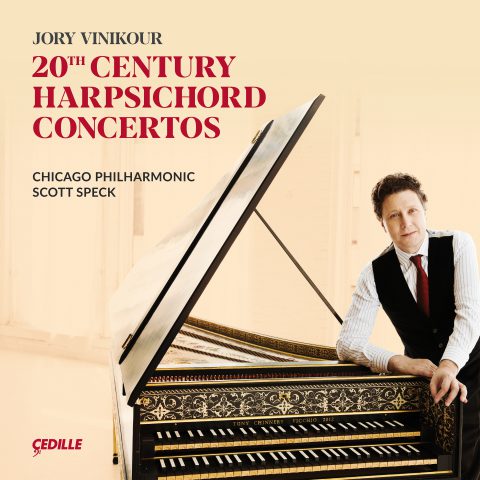Store
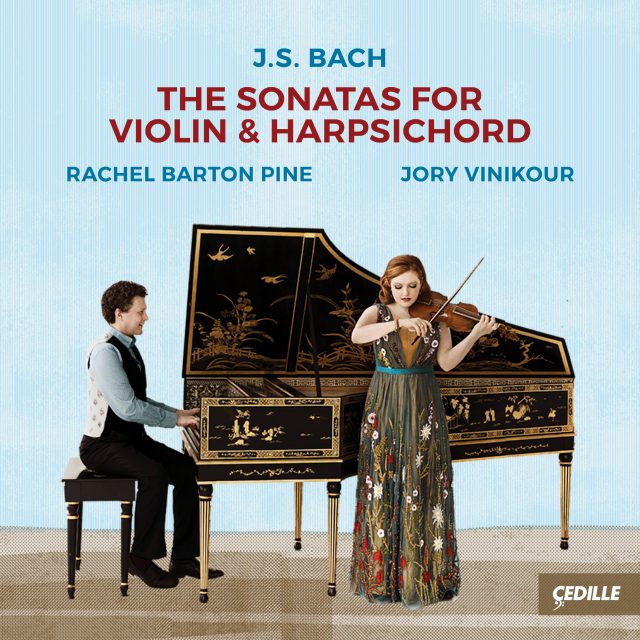
Violinist Rachel Barton Pine and harpsichordist Jory Vinikour, critically acclaimed artists of international renown — and also close friends — record together for the first time on this album of J.S. Bach’s complete sonatas for violin and harpsichord. The artists approach these works as Bach intended: as trio sonatas with equally important roles for the violin and the harpsichord’s treble and bass lines. In addition to the six Sonatas, the album offers the remarkable and ravishingly poetic Cantabile, BWV 1019a, a freestanding work that Bach originally conceived as a movement of the Sonata, BWV 1019.
Cedille’s audiophile engineering and the intimate acoustics of Evanston, IL’s Nichols Hall allow the complex trio textures to blossom with detail. In all, the album sets a new standard for a body of work that Bach’s son, C.P.E., considered among his father’s finest compositions.

Listen to Steve Robinson’s interview
with Rachel Barton Pine and Jory Vinikour
on Cedille’s Classical Chicago Podcast
Preview Excerpts
J.S. BACH (1685 - 1750)
Sonata in B minor, BWV 1014
Sonata in A major, BWV 1015
Sonata in E major, BWV 1016
Artists
Program Notes
Download Album BookletJ.S. Bach: The Sonatas for Violin & Harpsichord
Notes by Jory Vinikour
Johann Sebastian Bach’s six sonatas for violin with harpsichord obbligato (BWV 1014–1019) were likely composed during Bach’s period in Cöthen, between 1717–1723. Bach’s son, Carl Philipp Emanuel (CPE) describes these works as among the finest his father composed. The idea of juxtaposing a thorough-composed harpsichord part against the “solo” instrument was quite novel at this time, the harpsichord possessing a tremendous solo repertoire, but used principally as a continuo instrument in ensembles. Apart from the concerti for harpsichord and strings, Bach used the harpsichord as an equal duo partner in three sonatas with viola da gamba, at least two with flute, and the six with violin.
These works, though never published in Bach’s lifetime, were admired by Bach’s followers, and copies circulated throughout Europe.
CPE describes these works as trio sonatas, much in line with the trio sonatas for organ. That is to say, the violin and the two hands of the harpsichord part each represent relatively equal polyphonic lines within this three-part framework. That said, the sonatas vary tremendously in character, and even in texture, Bach treating both instruments in a profoundly idiomatic fashion.
As a case in point, the sonata in B minor, BWV 1014, begins with a highly expressive adagio. The violin’s florid cantilena is accompanied by a steady eight-note accompaniment from the harpsichord, with the right hand’s two voices mostly playing thirds or sixths, although frequently forming two independent voices. When one considers that the violin is also frequently playing double-stops, this brings the movement to a five-part texture. The second movement is a fairly straightforward fugue, in a true trio sonata texture. The third movement, in D major, is a serene andante, the violin and the right hand of the harpsichord embroidering over a steady eight-note bass line. The brilliant finale again shows the violin and the two hands of the harpsichord in a three-part contrapuntal texture.
The first movement of the sonata in A major, BWV 1015, lacks a tempo indication, but the 6/8 time signature, the marking of dolce, and the graceful subject point to an intimate nature. The melody is heard first in the violin, then imitated in canonic fashion by the harpsichord — first in the right hand, then the left. This is followed by a vigorous allegro, in 3/4 time. Although the three-part polyphonic treatment remains present, Bach gives the violinist idiomatic arpeggiated figuration. The indications of piano and forte surely indicate Bach’s intention for this to be performed on a two-manual harpsichord.
The third movement, in F-sharp minor (andante un poco), features a canon at the unison between the violin and the right hand of the harpsichord, accompanied by an arpeggiated left hand, marked staccato sempre. The sonata closes with a joyous presto, with the violin and the two hands of the harpsichord engaged in a three-part fugal dialogue.
The sonata in E major, BWV 1016, opens with a monumental adagio. Over a thickly layered, chorale-like accompaniment in the harpsichord, the violin soars freely in a richly ornamented line. This is followed by a merry fugue. The third movement, Adagio ma non tanto, shows the two instruments exchanging expressive tripletted figuration and chordal accompaniment. The final movement, a brilliant, concerto-like allegro, features the violin and harpsichord exchanging brilliant, swirling, sixteenth-note figuration. The movement’s middle section juxtaposes a development of this writing with contrasting triplet material, creating an unusual two-against-three rhythmic texture.
The sonata in C minor, BWV 1017, begins with a siciliano, the violin’s exquisite melody accompanied by the harpsichord’s arpeggiated right hand figuration. The serious second movement is an extended fugue. The third movement, in 9/8 meter, juxtaposes the harpsichord’s flowing triplet figuration against the violin’s simple melody. Only at the end of the movement, Bach introduces a passage in 16th notes, bringing the movement to a close on the dominant. The final movement, in 2/4, is an energetic fugue.
The opening movement, Largo, of the sonata in F minor, BWV 1018, sets a mood of profound introspection that would not seem out of place in any of Bach’s large-scale liturgical works. Written in four-part counterpoint, the theme is developed first in the harpsichord. The violin enters after several measures on a low, sustained C. Interestingly, the violin seems to comment on the surrounding contrapuntal texture, but does not genuinely participate in the fugal interplay of the harpsichord’s voices. As this lengthy movement finally closes on the dominant, this prepares the intense, allegro fugue. The beautiful adagio movement that follows also displays Bach’s freedom from strictly equal trio textures. Over the harpsichord’s ostinato fabric of flowing thirty-second notes, the violin provides a steady accompaniment in eighth-note double-stops. (An earlier version of the movement exists, with the harpsichord figuration simplified to sixteenth-notes.) The fugal concluding vivace, in 3/8 time, ends this work with an appropriately mysterious chromatic theme.
The sonata in G major, BWV 1019, seems to have undergone significant changes, and several distinct versions exist. Among the movements included in the version heard here, I should note two that are in essence the corrente and the tempo di gavotte movements from the Partita for harpsichord in E minor, BWV 830. The corrente appears as a solo keyboard movement, with slight differences from the original Partita version, and the tempo di gavotte is transposed to G minor. There is also a remarkable movement, marked Cantabile, ma un poco adagio (BWV 1019a). Although an extraordinarily memorable piece on its own, uniquely poetic, Bach may have decided that its great length unbalanced the sonata. Rachel and I offer this work separately from the rest of the sonata.
As it stands, this sonata is in five movements, unlike the others. The first movement is an exuberant allegro, brilliant and concertante, certainly evoking Corelli’s style. In the largo, the violin’s dramatic dotted figures contrast with the harpsichord’s left hand, in steady eighth notes. This short movement ends on the dominant, leading directly into the allegro for solo harpsichord, the only such movement of these six sonatas. Something of a burlesca, this movement displays Bach’s brilliance as a harpsichordist. The following adagio, in B minor, is of a rather serious character, the meandering themes leading us to the dominant of the finale. The main theme of the joyous, gigue-like movement that closes the sonata is strongly reminiscent of the aria, “Phoebus eilt mit schnellen Pferden,” from the Wedding Cantata, BWV 202.
Album Details
Total Time: 99:45
Producer: Jim Ginsburg
Engineer: Bill Maylone
Editing: Jeanne Velonis
Recorded: September 5-8, 2017 at Nichols Hall at the Music Institute of Chicago, Evanston, IL
Photographs: Lisa Marie-Mazzucco
Design: Bark Design Chicago
Publishers: Harpsichord Part © G. Henle Verlag; Violin Part © Oxford University Press
© 2018 Cedille Records/Cedille Chicago
CDR 90000 177
